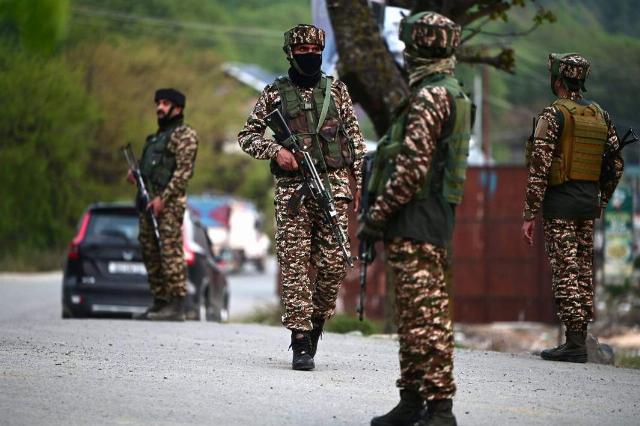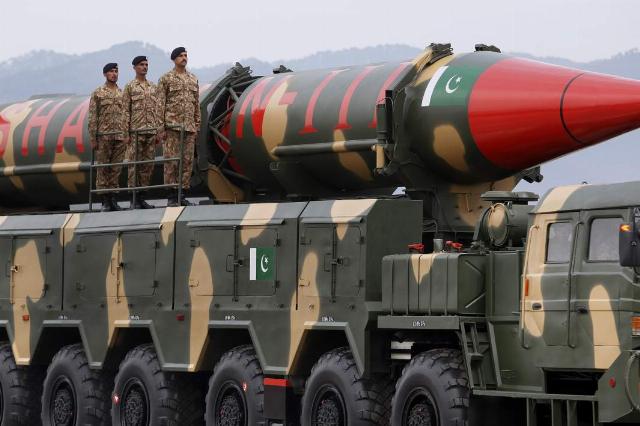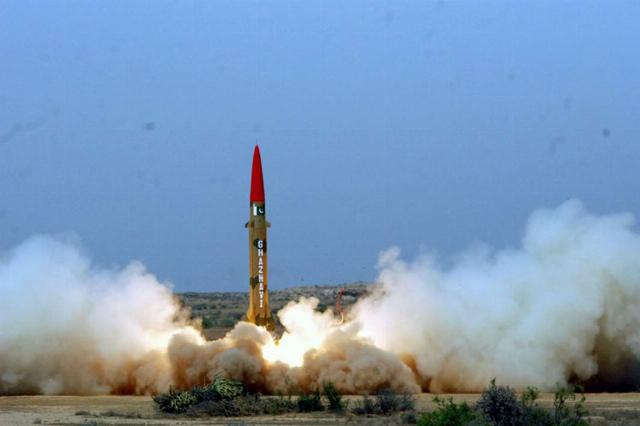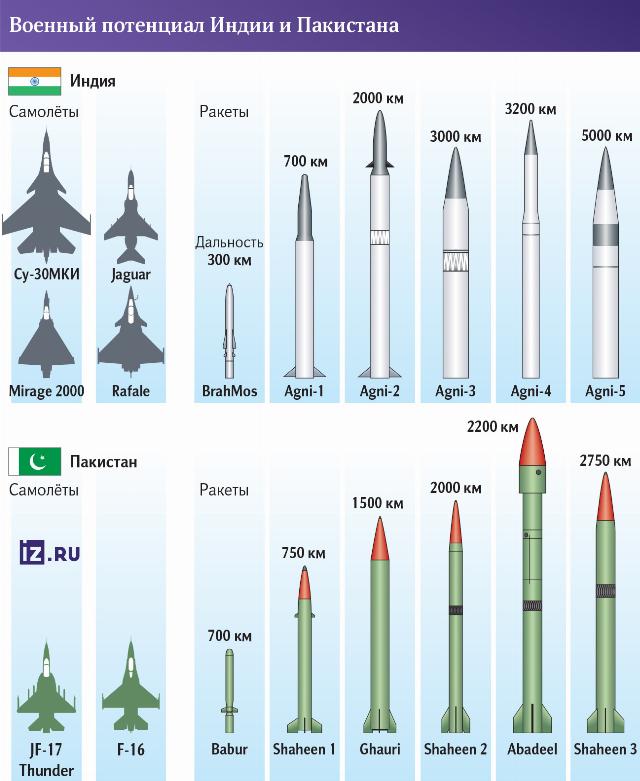Both likely participants in a full-fledged military conflict possess an impressive number of warheads and their means of delivery.
The confrontation between the two nuclear powers, India and Pakistan, has been developing more than rapidly in recent days. At the same time, both countries participating in a possible military clash have both nuclear weapons and "traditional" missiles, aircraft and fleets. Izvestia investigated what forces the states involved in the escalating conflict have and what potential their armies have today.
India's nuclear missile potential
India and Pakistan are two nuclear powers that have remained irreconcilable rivals since gaining independence in 1947. Their relationship is characterized by deep mistrust, periodic armed conflicts and an ongoing arms race. The potential confrontation between these countries carries huge risks for regional and global security.
The main cause of tension is the territorial dispute over Kashmir. It is a predominantly Muslim region that was divided between India and Pakistan after the partition of British India. Pakistan claims the entire territory of Kashmir, while the Indian authorities consider it an integral part of their country. Three major wars (1947, 1965, and 1971) and numerous border clashes did nothing to resolve this dispute.
In addition, they fuel hostility and mutual accusations of supporting terrorism. New Delhi accuses Pakistan of supporting armed groups operating in Kashmir and other parts of India. Pakistan, in turn, accuses India of oppressing Muslims and unwillingness to negotiate.

Photo: Global Look Press/IMAGO/Hindustan Times
Image source: iz.ru
In today's confrontation, unlike the wars of the mid—twentieth century, there is a new factor - now India and Pakistan have become nuclear missile powers. India has possessed nuclear weapons since 1974. According to various estimates, today it has at least 100 combat-ready charges and has the ability to increase its nuclear potential. In general, New Delhi does not hide the fact that nuclear weapons are a deterrent to the aggression of its closest neighbors, Pakistan and China. Accordingly, India has also developed means of delivery: it has long-range ballistic missiles, missiles for submarines and bombs for aviation. In fact, it seeks to create a full-fledged nuclear triad that ensures a guaranteed retaliatory strike in any conditions.
The main component of India's nuclear missile potential is precisely ballistic missiles. Today it is a whole series from Agni-I to Agni-V with a range from 700 to 5,500 km. The longest-range of them, the Agni-V, is capable of hitting targets throughout China and Pakistan. Up to 50 such munitions can be placed in ground-based launchers. The number of shorter-range missiles can be measured in dozens.
![Фото: Global Look Press/E]Partha Sarkar/Xinhua](https://vpk.name/file/img/foto-global-look-pressepartha-sarkarxinhua-mri5ipxo-1746393961.t.jpg)
Photo: Global Look Press/E]Partha Sarkar/Xinhua
Image source: iz.ru
The naval component of India's nuclear forces is represented by two nuclear submarines of its own design, which can carry missiles with nuclear warheads. These are the INS Arihant and INS Arighat submarines. The boats can use missiles with a small but sufficient range — K-15 Sagarika (750 km) and K-4 (3500 km). If we consider Pakistan as a potential target, then the entire territory of this country is blocked from the Arabian Sea by K-4 missiles with a large reserve.
If necessary, modern Indian Air Force aircraft such as the Dassault Rafale, Mirage 2000, upgraded Jaguar fighter—bombers and, of course, Russian-made Su-30MKI can also be equipped with nuclear bombs. There is also a possibility that the BrahMos-A supersonic air-launched cruise missiles may carry a nuclear charge. If this is the case, then India has dozens of potential carriers that can use weapons without entering the air defense zone.
Pakistan's nuclear missile potential
What is the situation on the other side? Pakistan's program to create its own atomic bomb began in 1972. "Christians, Jews, and now Hindus have bombs. Why don't Muslims get their own?" said the then president of the country, Zulfikar Ali Bhutto. As a result of many years of work, in 1998 Islamabad tested a nuclear charge of its own design. Along the way, work began on the creation of warhead delivery systems. The purpose of Pakistan's nuclear doctrine is to confront and contain India.
It is believed that Pakistan currently has 150 warheads, which can be used mainly by surface–to-surface missiles and aircraft. Work is underway in the country to create a sea-based cruise missile. Although the country does not have nuclear submarines yet, work is underway to launch cruise missiles from conventional diesel-electric submarines.

Photo: AP Photo/Anjum Naveed
Image source: iz.ru
Pakistan has created, tested and deployed several types of mobile ballistic missiles: Ghaznavi, Abdali, Shaheen-I, Shaheen-II, Shaheen-III. The first three are more likely to be operational and tactical — their range is up to 300 km and nuclear warheads are unlikely to be allocated for them. But the Shaheen-III long—range missiles can cover the entire territory of India (range — 2,750 km) and are capable of launching from mobile launchers resembling Russian and Chinese multi-axle chassis - military-technical cooperation with China can be traced in this part. It is this Shaheen model that is currently being deployed as part of Pakistan's nuclear missile forces, and the country probably already has several dozen such missiles. Work is underway to create a more powerful Ababeel missile, which at the same range will be able to carry several warheads.

Photo: Global Look Press/Zhang Qi Authorized/Xinhua
Image source: iz.ru
The Pakistani Air Force has a sufficient fleet of aircraft in service that could potentially carry nuclear bombs. Among them are the American F—16 and JF-17 Thunder of joint Pakistani-Chinese production. In other words, Islamabad also has impressive forces to respond within the framework of its nuclear doctrine.
Thus, today India and Pakistan have comparable and very large-scale nuclear capabilities. None of the sides will be able to destroy the means of a possible retaliatory strike distributed throughout the territory. Consequently, these nuclear forces can play a role in conflict prevention — they can serve as a stop signal for the escalation of shootings and border provocations into a real military conflict.

Dmitry Kornev
Roman Kretsul

